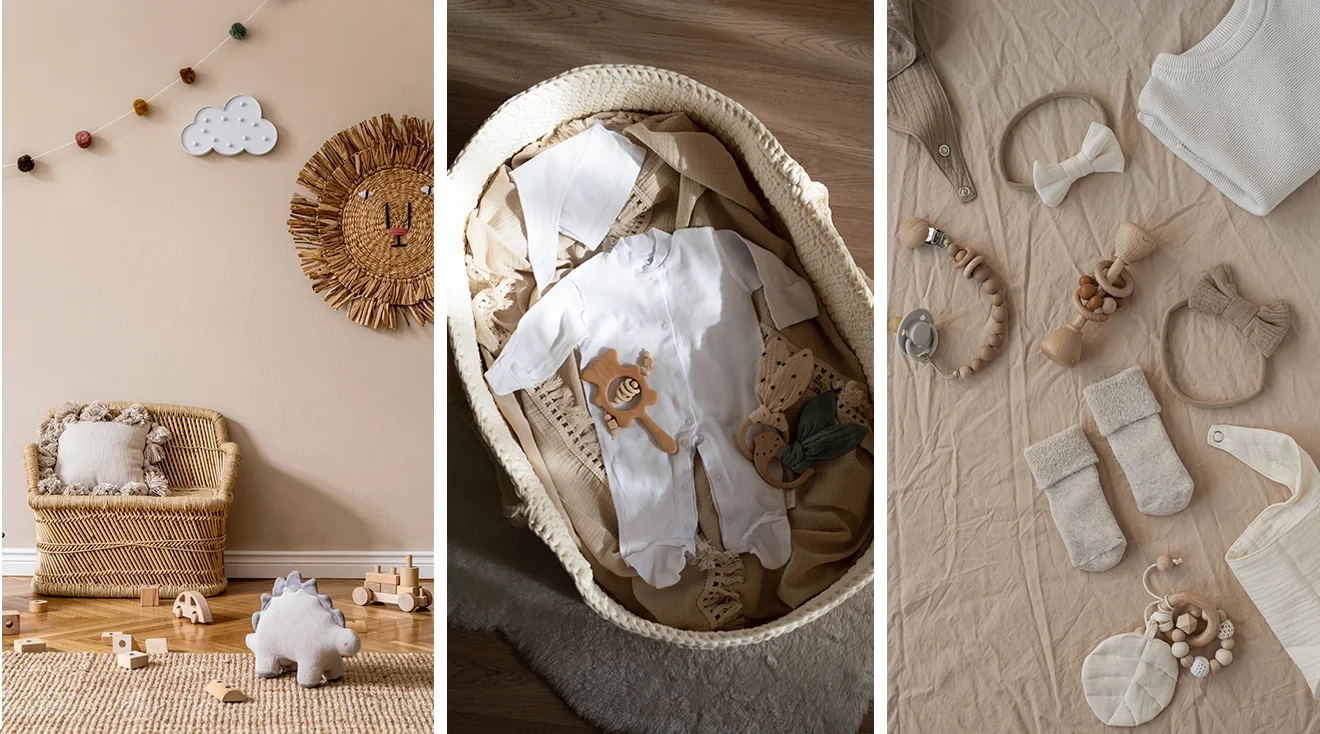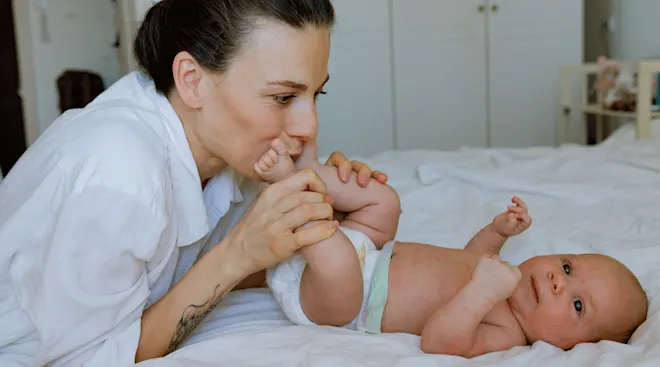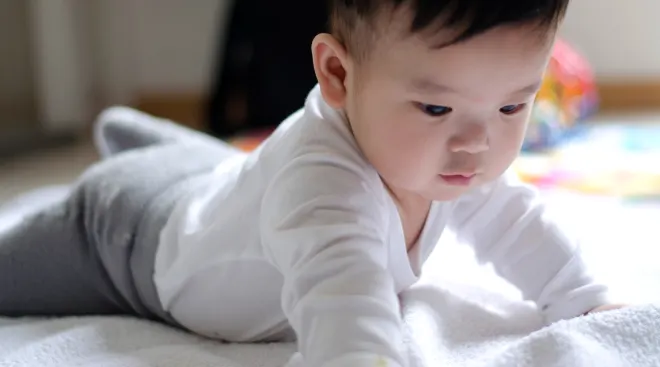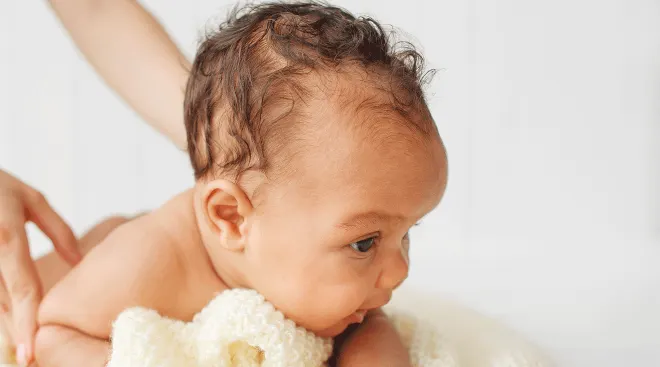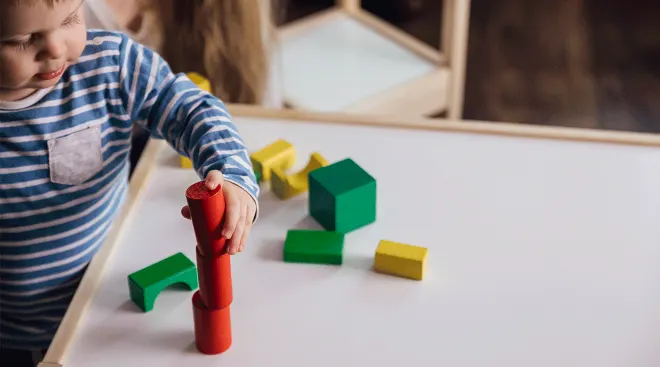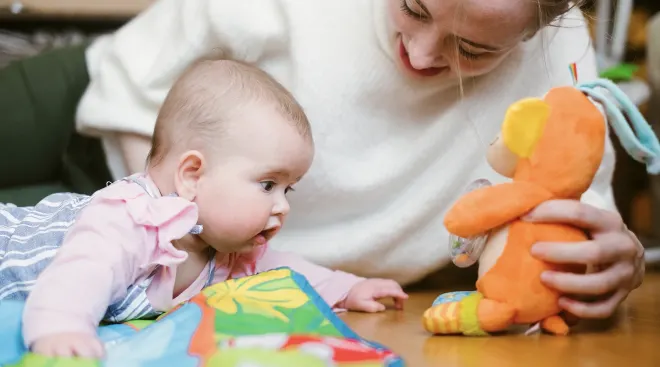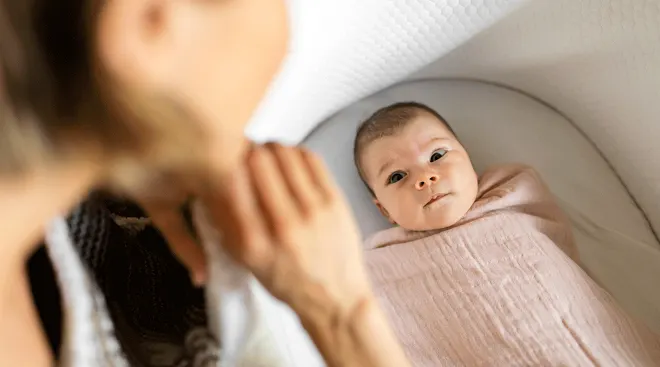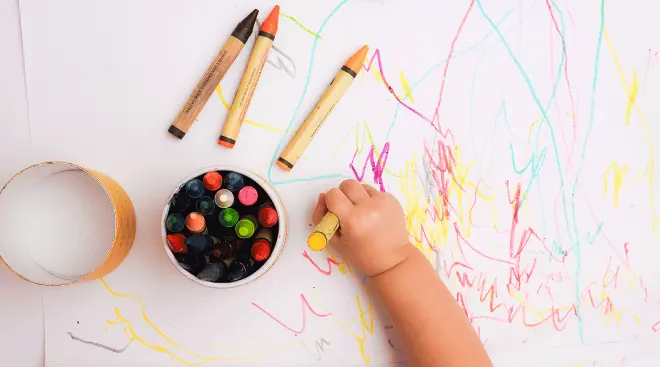How Colors Play a Role in Baby’s Development
It’s no secret that beige—and all neutral colors—are having a moment, and you’ve likely seen an uptick in gorgeously curated images of earth-toned nurseries, toys and baby outfits in your digital feeds. But while subdued color palettes are definitely on trend, they’re also a marked departure from the whimsical, brightly colored playthings and spaces traditionally associated with childhood. So is “sad beige parenting”—a term coined by librarian Hayley DeRoche, whose TikTok and Instagram accounts mocking the trend have quickly gone viral—simply a chic way to accumulate baby products that won’t clash with your design aesthetic, or is it actually detracting from childhood? How important is the role of color in child development, really? We asked experts for the lowdown.
Newborns’ vision takes time to fully develop, which means they can’t pick up on colors right away. According to Sanam Hafeez, MD, a neuropsychologist based in New York City, studies have shown that newborns can really only see shades of black, white and gray at birth, so high-contrast colors are easier for them pick up on. Babies don’t start to visually process colors until 3 to 4 months of age; once they do, red, blue, yellow and green are often the first colors they respond to. (To learn more about how and when babies see color, click here).
Not surprisingly, color can have a notable impact on how baby’s vision develops—but it can also play a role in a child’s evolving language skills and emotional intelligence as they age. Below, a rundown of how colors can impact baby’s physical, cognitive and emotional development.
Cognitive and visual development
The American Academy of Ophthalmology notes that baby’s optic nerve—which is responsible the processing of visual images by carrying them from the eye to the brain—grows rapidly in the first three years of life. Initially, newborns can’t see in full color, so most toys and board books for the first few months of life use bright images with high contrast (like black and white) and lots of white space, says Natasha Burgert, MD, FAAP, a Kansas-based pediatrician and Philips Avent expert.
These sharply contrasting colors, shapes and patterns encourage baby’s development in many ways. First, they’re easier for babies to see and process, compared to muted colors with lower contrast, says Jody LeVos, PhD, childhood development expert and chief learning officer at the education company BEGiN. Plus, they also help to boost “the development of optic nerves and encourage babies’ cognitive development without overstimulating them,” Hafeez explains.
Babies gradually begin to process more colors as they grow and can typically see the full color spectrum by 6 months old, Burgert says. “As children age, so do the cells in the eye.” And the more color baby sees, the better their retinas will begin to process them, says Carolyn Rubenstein, PhD, a licensed psychologist in Florida. She recommends paying attention to baby’s interest and how long they look at something. This can help determine when to add more colors to baby’s space to slowly stimulate their visual development and strengthen the bond between visual and cognitive processing. “Brain cells receive input from baby’s different developing senses that allow the nerves to expand and grow,” Rubenstein explains. “The more visual stimuli you provide, the more the baby’s retina matures, and the optic nerves progress.”
Language development
Colors also play an important role in baby’s language development. As baby ages, they may develop a preference for bright primary colors. “Toys and objects in these hues could be especially interesting for them (as opposed to more muted hues like pastels),” LeVos says. That’s because these bright colors are attention-grabbing—and they can provide an opportunity to teach baby about what they’re seeing. “Though it will be many months before they start talking, it’s never too soon to describe the world around you and support language development,” LeVos says. Parents can say things like: “Do you like the blue truck?” or “Look at this blue truck! This blue truck is the same color as this blue pillow.” This helps build baby’s vocabulary for the names of different colors, as well as helps them “make connections and notice patterns in their environment,” LeVos explains.
It’s also easier for younger children to remember colors than verbal cues, Hafeez adds, so adding colors to objects can help improve memorization. Plus, many studies have linked certain colors to brain activity and stimulation. “From a young age, children associate colors with particular objects (i.e., yellow for the sun, blue for the sky). Colors help assess, estimate and define objects,” Hafeez says. “This can help a toddler learn and increase their attention span. For example, a child can link red to a firetruck associated with danger.”
Emotional development
Pixar’s Inside Out wasn’t far off: As kids grow, associating colors with different emotions can help them process all their big feelings. In fact, by 3 years old, kids may associate yellow with happiness and blue with sadness. “Colors can enhance a child’s imagination,” Rubenstein says. “Understanding color aids them in their creativity and comprehension of what each color is and what it represents.” This is also linked to the development of preschoolers’ verbal expression, Burgert adds: “In order to coordinate color with emotion, there needs to be a connection between a visual stimulus, an emotional trigger and the ability to verbally express the name of a color.”
While contrasting and bright colors are important as baby starts to process and learn different colors, they may become overstimulating as your child gets bigger. Haafez cites yellow as an example: While it’s a color associated with happiness, too much of it can cause stress. In fact, according to a 2016 study, play surfaces with lots of colors were found to be more distracting for preschoolers and older children. As your child grows, neutral and more calming colors may even help soothe them.
Experts agree that black, white and high-contrast colors are best for baby’s early development, and a spectrum of colors can help little ones manage their big feelings later on. But does this mean beige and neutral colors might be hindering baby’s development? Not necessarily.
“While a toy that’s beige is not harmful, a toy with a bold black-and-white pattern (which has high contrast) will likely be more interesting for baby,” LeVos says. “Having said that, you don’t need to turn everything black and white!” The good news is there are plenty of existing objects that provide sharp contrast that you may not even think about. “You may notice that baby is fascinated with the ceiling fan (even when it’s not on), which is an example of an object in the real world that already provides the type of contrasting colors baby craves,” LeVos explains. Luckily, these natural contrasts are easy to find and create, like putting a dark ceiling fan against a light-colored ceiling or a bright pillow on a light-colored chair. Plus, many baby toys feature primary colors and color-block patterns to provide the visual stimulation baby needs, so you don’t have to buy everything in a certain color or with a specific amount of contrast, LeVos says.
The bottom line? Contrasting and bright colors are important for baby’s development, but it doesn’t mean you need to give up your love of neutrals and beige when it comes to baby’s gear. Most baby toys are focused on early development, so as long as they have a good mix of neutrals and colors, baby will be just fine. If you’re ever concerned about baby’s visual or cognitive development, flag it with your doctor. “Visual development is directly related to other developmental goals,” Burgert says. “If you ever have concerns about vision or visual processing, reach out to your child’s pediatrician.”
Please note: The Bump and the materials and information it contains are not intended to, and do not constitute, medical or other health advice or diagnosis and should not be used as such. You should always consult with a qualified physician or health professional about your specific circumstances.
Plus, more from The Bump:
Natasha Burgert, MD, FAAP, is a pediatrician at Pediatric Associates in South Overland Park, Kansas, an expert partner with Philips Avent and the blogger behind KC Kids Doc. She earned her medical degree from University of Nebraska Medical Center in Omaha, Nebraska.
Sanam Hafeez, MD, is a neuropsychologist based in New York City and the founder of Comprehensive Consultation Psychological Services (CCPS), which supports mental health advocacy and special education. She received her doctorate at Hofstra University and completed her postdoctoral work in neuro-developmental psychology at Coney Island Hospital. She’s also part of Columbia University’s faculty for their Ph.D. program in clinical psychology.
Carolyn Rubenstein, PhD, is licensed psychologist in Florida, as well as author of Perseverance: How Young People Turn Fear into Hope and How They Can Teach Us To Do The Same. She earned her bachelor’s degree from Duke University; her master’s degree in psychology from Harvard University; and her doctorate degree in counseling psychology from the University of Miami.
Jody LeVos, PhD, is the chief learning officer at BEGiN, an education company focused on early learning. She has over a decade of experience working in early childhood development. She received her bachelor’s degree in psychology from University of Alberta, as well as her doctorate degree in developmental science. She completed her postdoctoral fellowship in education at the University of California, Berkeley.
American Academy of Ophthalmology, Optic Nerve Growth in Kids, December 2016
Journal of Physiological Anthropology, Effects of object color stimuli on human brain activities in perception and attention referred to EEG alpha band response, May 2007
Frontiers in Psychology, Disruptive Effects of Colorful vs. Non-colorful Play Area on Structured Play—A Pilot Study with Preschoolers, October 2016
Learn how we ensure the accuracy of our content through our editorial and medical review process.
Navigate forward to interact with the calendar and select a date. Press the question mark key to get the keyboard shortcuts for changing dates.

































